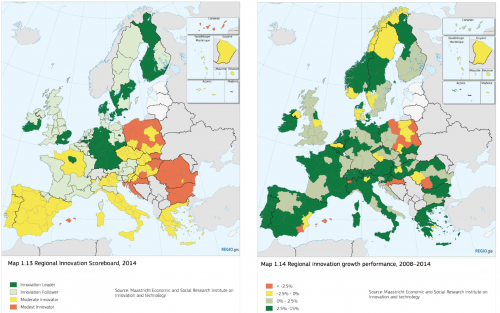International
Why employees don't use collaboration tools? #Collaboration #Tools #Digital #User
Enterprises continue to roll out tools like Slack and Hipchat, but many struggle to get users to adopt them. Here's why.
No compelling reason
One reason for this may be that while certain software packages are vital for some employees to carry out their work — accountants need a spreadsheet program, for example — no employees need access to team collaboration software to get their jobs done.That's the view of Michael Fauscette, G2 Crowd's chief research officer. Although tech-savvy early-adopter types may be clamoring to start using Slack (or something similar) as soon as possible, Fauscette believes that most other employees have to be given a compelling reason to take up a new tool. Otherwise, the evidence shows, many simply won't bother. "Many staff will likely think: 'what's in it for me?' If this is not articulated clearly then why should they make the effort?" Fauscette says. "You have to demonstrate to them that the product will provide some value.""My tip is to ask yourself why your employees need a collaboration tool," he says. "If you can't answer that question easily then you are going to find that the software you pick is going to be a hard sell, and maybe you shouldn't be trying to implement it."Poor user interfaces
One thing that G2 Crowd's research picked up is that the user interface of collaboration software can "make or break" user adoption. This focus on appearance may seem contrary to Fauscette’s advice to demonstrate value, but Fauscette says that it comes down to persuading people to change their behavior. In many cases this means getting them to stop using a selection of other tools — including email, but also newer apps like WhatsApp, Twitter and so on — when they move to a corporate collaboration app."They will have had a simple user interface experience on the consumer side, so there is the expectation that this is how these tools should be," he explains. "Tools like Twitter are actually not simple, but they have a front end which is easy to use. Asking people to change is not easy, so you need to move to a tool that offers a similarly clean and smooth interface."Unnecessary functionality
Another reason users prefer collaboration tools with simple interfaces is that many — probably most — users only do simple things with them, according to Alan Lepofsky, a specialist collaboration tool analyst at Constellation Research. "People can jump into something like Slack, but when you show them what it can do only about 5 percent of people actually need or use that. If you put Slack into a typical sales and marketing department it will just be used like Skype but with the occasional smiley thrown in," he says.Lepofsky adds that Facebook's Workplace has a huge advantage over other collaboration tools simply because most people are already familiar with the Facebook interface. For that reason, he believes that enterprises that implement Workplace will see above average adoption rates.A simple or familiar user interface may be important to get people to try a new collaboration tool, but can it get them to stick with it?Here companies face what Fauscette terms the "email overload problem version 2." Put simply, he says that many employees get bogged down under the weight of vast numbers of emails, and moving to a tool like Slack or Hipchat simply shifts the problem to a different platform. Instead of getting too many emails, employees risk getting too many notifications and messages.Artificial intelligence to the rescue
One solution to this in the short term may be better education for new collaboration tool users, to ensure that they know how to filter notifications and separate activities into channels so they don't get swamped.In the longer term this may not be necessary thanks to the increased use of artificial intelligence (AI) to help filter what an employee needs to see immediately from the general noise that collaboration tools can generate, Fauscette believes. "If I can teach a machine what I am interested in in various contexts then it can filter information for me," he says. "AI is great for filtering and I think that this is the way that things will have to go."Fauscette adds that another reason some users may not stick with a company's chosen tool is that its functionality may be weak in an area that they use frequently. "We can end up with a Slack-centric company, and employees are expected to use it for all the things that it is good for, and for all the things that it is not so good for," he says. The result can be that some users select and use other tools more suited to their needs — often without the knowledge or approval of the IT department.But, ultimately, companies should not get too fixated on the levels of adoption that their collaboration tools attain, says Alan Lepofsky, because even small pockets of collaboration within an organization can lead to significant overall benefits. "What tool does have 100 percent adoption in an organization?" he concludes. "Probably only payroll and HR."
The cloud changes IT culture, thinking like a startup #IT #StartUp #Change
As enterprises are moving to the cloud, it’s changing a whole lot more than just where companies’ data and services are sitting.
The emergence of the cloud is heralding a shift in the skills that IT workers need and the jobs they are doing. It’s changing the entire culture inside IT departments.
“The cloud is part of the evolution of IT,” said Mike Chapple, senior director for IT service delivery at the University of Notre Dame. “People can’t be living in one particular technical silo anymore.”
The trend is also altering the balance of who is pushing to migrate to the cloud. IT often is no longer shepherding the cloud migration. Business executives are dragging IT into the cloud and tech leaders are finding themselves being forced to keep up.
Holding the microphone, Mike Chapple, senior director for IT service delivery at the University of Notre Dame, and other IT managers offer advice to companies considering a move to the cloud during a session at the AWS re:Invent conference in Las Vegas on Wednesday.
Technology leaders told Computerworld about these changes during AWS’s recent re:Invent cloud-themed conference.
How IT fits
Those shifts are starting with how IT sees itself fitting inside the business as a whole...
Office 365 Vs. Google Apps ! #GoogleApp #Office365 #Collaboration
Often I have colleagues requesting me what is the better between Office365 and Google App.
I’ve found this quick study that I think could bring some ideas to help on the choice.
15 Amazing quotes to start the Journey #Motivation #Leadership #Quote
1. “I’ve missed more than 9,000 shots in my career. I’ve lost almost 300 games. 26 times I’ve been trusted to take the game winning shot and missed. I’ve failed over and over and over again in my life and that is why I succeed.” –Michael Jordan, NBA Legendary Basketball MVP
2. “Chase the vision, not the money; the money will end up following you.” –Tony Hsieh, Zappos CEO
3. “The critical ingredient is getting off your butt and doing something. It’s as simple as that. A lot of people have ideas, but there are few who decide to do something about them now. Not tomorrow. Not next week. But today. The true entrepreneur is a doer, not a dreamer.” –Nolan Bushnell, Entrepreneur
4. “Your work is going to fill a large part of your life, and the only way to be truly satisfied is to do what you believe is great work. And the only way to do great work is to love what you do.” –Steve Jobs, Co-Founder, Chairman and CEO, Apple
5. “It’s almost always harder to raise capital than you thought it would be, and it always takes longer. So plan for that.” –Richard Harroch, Venture Capitalist and Author
6. “Don’t worry about failure; you only have to be right once.” –Drew Houston, Dropbox Co-Founder and CEO
7. “Ideas are easy. Implementation is hard.” –Guy Kawasaki, Alltop Co-Founder and Entrepreneur
8. “Any time is a good time to start a company.” –Ron Conway, Noted Startup Investor, SV Angel
9. “The secret to successful hiring is this: look for the people who want to change the world.” –Marc Benioff, Salesforce CEO
10. “I skate to where the puck is going to be, not where it has been.” –Wayne Gretzy, Hockey Star
11. “If you’re going through hell, keep going.” –Winston Churchill, British Prime Minister
12. “Ideas are commodity. Execution of them is not.” –Michael Dell, Dell Chairman and CEO
13. “I knew that if I failed I wouldn’t regret that, but I knew the one thing I might regret is not trying.” –Jeff Bezos, Amazon Founder and CEO
14. “If you are not embarrassed by the first version of your product, you’ve launched too late.” –Reid Hoffman, LinkedIn Co-Founder and Venture Capitalist
15. “The way to get started is to quit talking and start doing.” –Walt Disney, Co-Founder, Disney
8 difference between Workplace and Home by LinkedIn #Infography #Workplace
8 difference between workplace and home. The technology and the evolution reduce more and more this difference.
Below an infography showing these differences. Amazing !
The One Secret of Highly Successful Leaders #Leadership #Management
Some leaders try to act like Steve Jobs or Warren Buffett because they assume it’s the right path to success. They may not even be aware that they are hiding behind a facade as they try to be a person who they are not.
Digitalization, opportunities and risks... #Digitalization #Strategy
The Consulting firm Accenture has just published a study on the Enterprise digital transformation. Conducted among 2000 leaders from 15 countries, in 9 different sectors (85% of the surveyed companies have more than $1 billion in revenue), the study highlights the expectations of digitalization, but also the potential brakes. Accenture focuses especially on the impacts of mobile technologies and the potential gains of digitalization.
Here are the main lessons from the survey:
- 80% of companies studied have a Chief Digital Officer or CDO
- 87% believe have made progress in their digitilization
- 48% of companies believe that digitizing can create new revenue streams
- 46% think that this can increase consumer engagement
- 45% think that fear would improve customer relationships and help penetrate new markets
- the most important developments are the analytics (34%), cloud (30%) and mobile(18%)
- the main pitfalls to digitalization are security (51%), the difficulty in adapting to technological developments (41%) and the difficulty in finding good partners/providers (37%)
To retrieve all of the results, you can also consult the complete online study.
ADP's Secret To Innovation: Combine IT and Product Development
It is an exciting time to be tapped into the chief information officer community by virtue of the top-tier leaders who are doing extraordinary things from that post. I have extensively covered the topic of the CIO-plus in read more
Cross-Cultural Leadership: How to Avoid Making People Lose Face
Business leaders of multinational organizations are often confronted with cross-cultural differences. These differences can cause misunderstandings and awkward situations between people. Especially when people feel they are losing Face. Face – an Eastern concept read more












